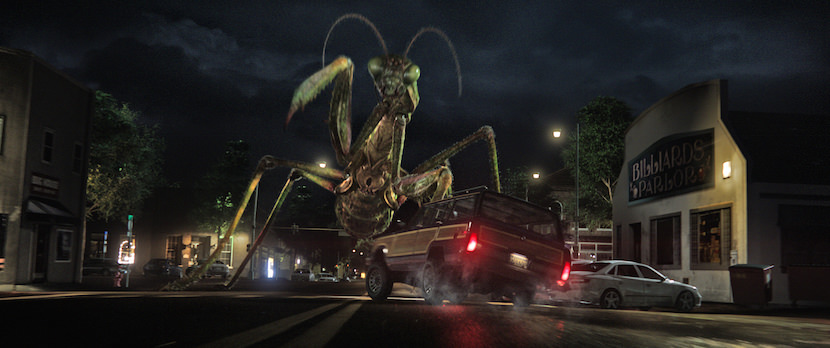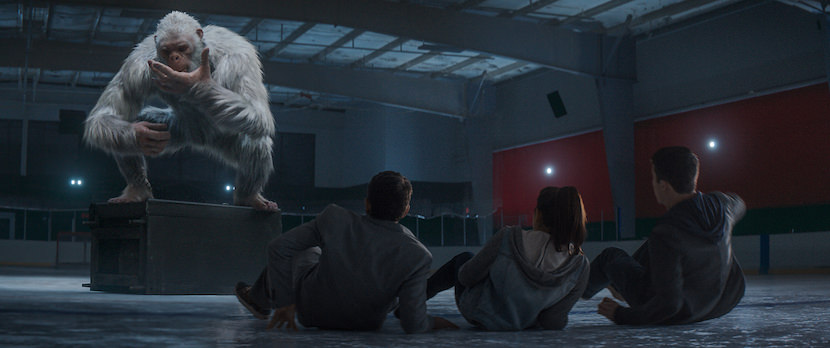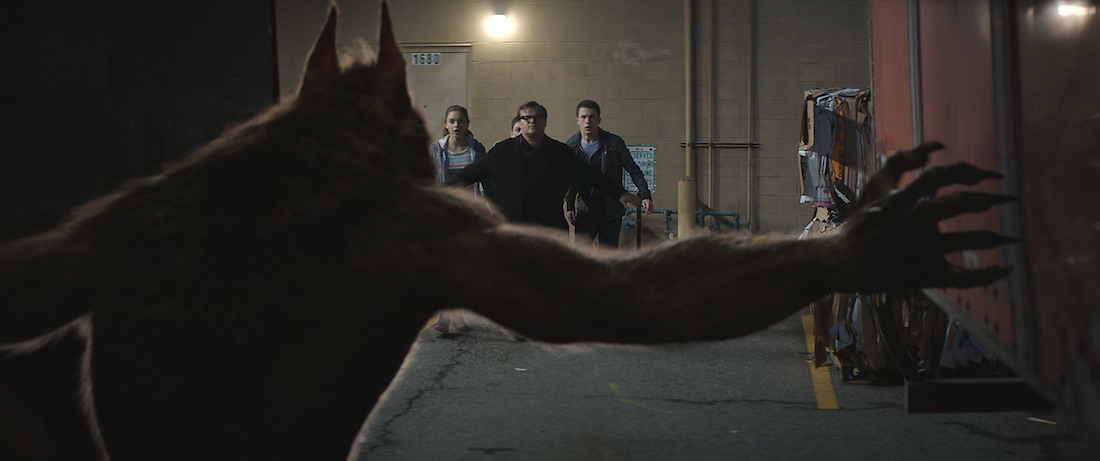Goosebumps VFX supervisor Erik Nordby on Creating R.L. Stine’s Monsters
Rather than choose one book from the phenomenally successful “Goosebumps” series to adapt, the film, starring Jack Black as author R.L. Stine, is a meta-story where all the best Goosebumps creatures come out of the woodwork. Visual effects supervisor Erik Nordby tells The Credits how they tackled this rather daunting task.

The film is essentially the culmination of nearly 200 Goosebumps books with all the monsters and creatures coming to life. How do you go about tackling such an overwhelming number of creatures?
Early on, Rob Letterman and the scriptwriters had the painstaking task of going through a hundred or so of the most popular (or prolific) Goosebumps creatures, and chose around 25 that felt apt for an adaptation on to film. From that list we divided them into two groups – one that could become hero characters and other that felt more like background.
The Goosebumps books have a huge number of fans- how important was it to stay true to the spirit of the books? How did you go about that?
It was a very interesting balance. The generation that really enjoyed the Goosebumps books has grown up a bit, we wanted to appeal to their sense of nostalgia, but also craft a film that would have an older structure they could tap into. The meta-story of having Jack Black star as R.L. Stine himself really helped create that balance. Beyond that, Rob wanted to adhere to the style of the book monsters. They should feel scary, but not horrific. There was always a part of the creature story that younger kids could relate to. For instance, the Werewolf wore basketball shorts, the Abominable Snowman was a pure innocent that just wanted candy, etc.

CG was utilized in the film but a lot of the creatures were actually dressed up actors, created with painstaking hair and make-up. How did you decide which creatures fell into which camp?
Any background bi-peds that weren’t hero, became practical. Anything that required very specific arcs became CG.
What was the biggest challenge for you, working on this film?
This film had an extremely wide body of work without a wide budget to go with it. It had a bit of everything, each bringing many unique challenges. In fact, I would say this factor was the number one VFX challenge on Goosebumps; its very wide breadth of work. There were many all CG creatures, and each one required a different approach and unique balance of R&D and design development.
Can you talk us through the some of the different approaches?
Take the Blob for example; huge amount of fluid-sim R&D to do for this creature – many months’ worth. Then almost as much look-development to tie together with that. It was amongst our most intangible creatures on set, since its scale was so mutable. So for eye line, blocking and Jack’s floating body, the Blob fit into our blocking instead of driving it.

Then on the other end of the spectrum, the Werewolf, required a very structured on set recipe. Since it was a human sized bi-ped, it needed to be direct-able, shoot-able and allow the cast to act around it. This meant a human proxy stand-in, with a high degree of athleticism and wolf-arm extensions. We added tracking markers which allowed quick-turnaround for a first pass blocking, and kept the edit fluid before we had to lock things down.
Abby the Snowman, was a hybrid; too large to have a human actor perform, but small enough we could provide a blocking eye line reference. In this instance, our PA’s running through the scene with Abby’s head on an 8 foot tall stick. Here we really tried to leverage a tool we brought to set for every creature – creature-specific reference spheres. During pre-production we were tracking down many fur samples, and Rob helped us pick a good, solid real-world equivalent for our furry creatures. We wrapped the samples around spheres, and combined them with skin samples (leather or a prosthetic piece). Then for every setup we would shoot these spheres in their respective lighting. We would also shake the fur around, giving our FX artists great dynamics reference as well.
Some creatures were a bit more conventional. The gnomes, for instance, were shot with hand-made stand-ins, the actors could interact with and smash, and then empty plates allows us to fully replace and fill the frame with their CG equivalents.
You have also worked as a cinematographer–how does that influence your visual effects work?
My background as a DP is by far the most relevant pre-VFX experience I pull from. Being able to think ‘photographically’ and understand how light works and how surfaces react to light is the base essence of VFX. At the end of the day we’re doing the same thing as a cinematographer, just on a different time-scale. I try to encourage all my artists to also think like a lighter.



